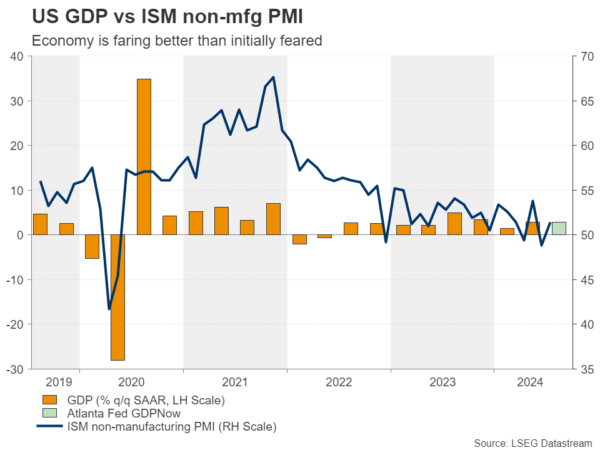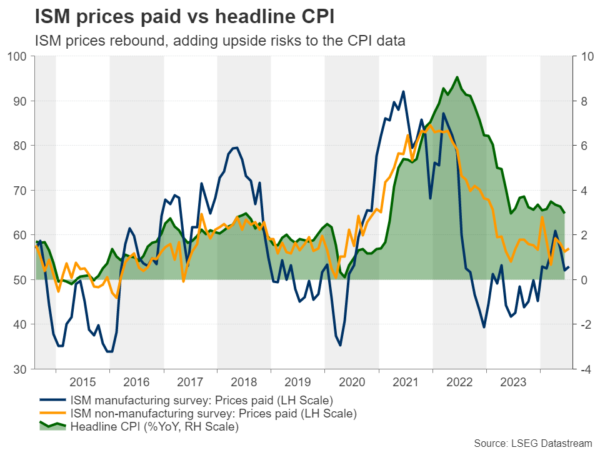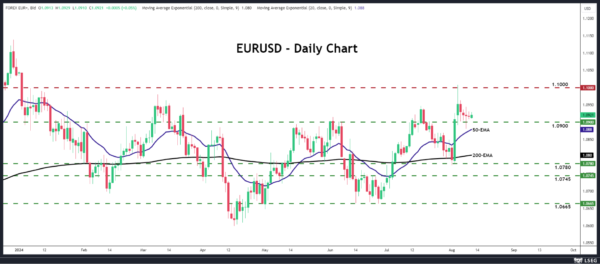- Investors panicked after NFP report
- But incoming data eased fears and rate cut bets
- Still, market pricing remains overly dovish
- Focus turns to US CPI on Wednesday and retail sales on Thursday, at 12:30 GMT
Latest data ease recession fears
Following the weaker-than-expected US employment report for July, market participants entered panic mode as recession fears resurfaced. The dollar tumbled, the commodity-linked currencies suffered, the yen extended its rally, and stocks slipped.
However, incoming data after the jobs numbers suggested that the US economy may not be on the verge of a recession as it was instantly feared. The ISM non-manufacturing PMI returned to expansionary territory, while the Atlanta Fed GDPNow model pointed to a 2.8% q/q SAAR growth rate in Q3. What’s more, initial jobless claims saw their largest drop in nearly a year during the week that ended on August 2.
But Fed rate cut bets remain overly dovish
Just after the NFP data were out, market participants started ramping up their rate cut bets, penciling in as many as 125bps worth of reductions by the end of the year. However, as new information was incorporated into their calculations, they decided to scale back their expectations, now expecting around 100bps worth of cuts. Yet, this remains an overly dovish bet as it means a reduction at each of the remaining meetings of the year, including a 50bps cut.
CPI and retail sales data pose upside risks
With all that in mind, investors are now likely to turn their gaze to the US CPI data for July on Wednesday and the retail sales numbers for the same month on Thursday. Expectations are for the headline CPI rate to have held steady at 3.0% y/y and for the core rate to have ticked down to 3.2% y/y from 3.3%. However, the prices subindices of both the ISM manufacturing and non-manufacturing PMIs increased in July, suggesting that the risks surrounding inflation may be tilted to the upside.
Combined with a potential improvement in retail sales on Thursday as the forecast suggests, this could ease recession fears even further and convince market participants that the Fed does not need to cut interest rates so aggressively, as deep cuts may risk allowing inflation to get out of control again.
Fewer basis points worth of rate cuts could translate into higher Treasury yields and a stronger US dollar, but also higher equities as investors become even less worried about the performance of the world’s largest economy, even if this means borrowing costs ending the year higher than expected.
Euro/dollar could slip back into a range
A strong dollar could push euro/dollar back below the key area of 1.0900, a move that could signal the pair’s return within the sideways range that had been containing the price action since the beginning of the year.
If so, the bears could feel comfortable driving the action towards the low of August 2 at around 1.0780, or towards the 1.0745 zone. If neither zone stops them, the decline may continue until they test the lower boundary of the range, at around 1.0665.
On the upside, the move signaling that the bulls are in charge may be a strong break above the round number of 1.1000.


















